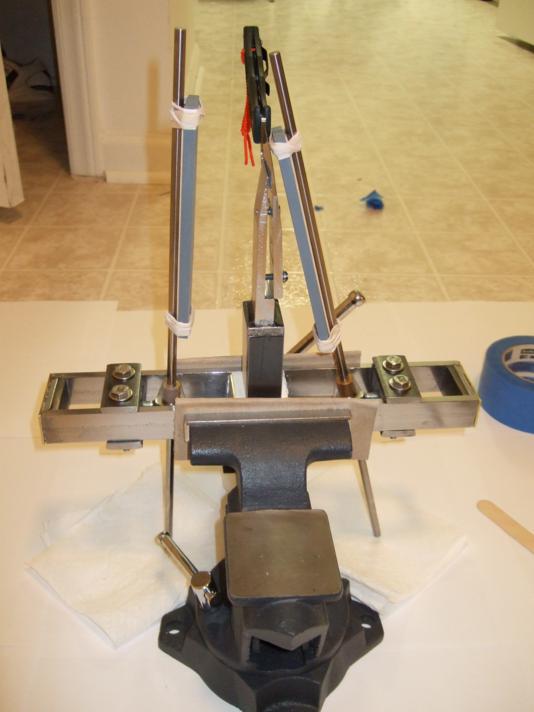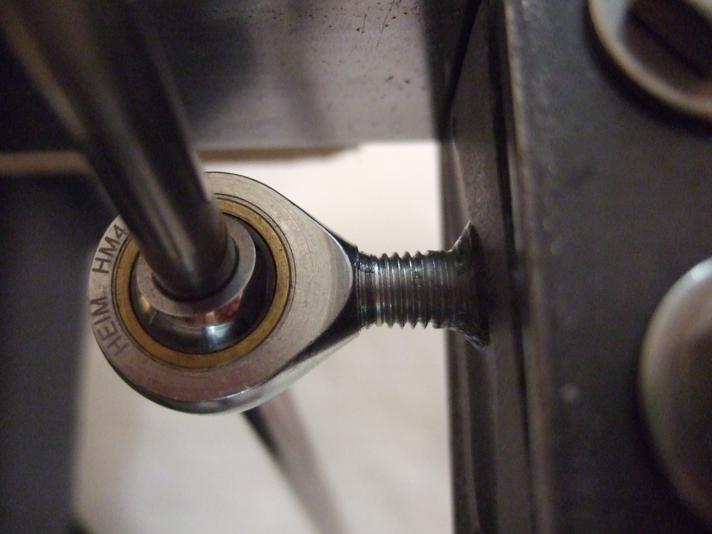Don't forget to consider high-end Shapton diamond flat stones from Japan:
Shapton Diamond Reference Lapping Plate (DRLP)
"plus or minus 3.5 micron tolerance"
http://www.jendeindustries.com/mm5/...JENDE&Product_Code=1019&Category_Code=SHARPEQ
Shapton Diamond Glass Lapping Plate (DGLP)
"The result is a flattening plate with a production deviation of ± 5 microns"
http://www.jendeindustries.com/mm5/...JENDE&Product_Code=1037&Category_Code=SHARPEQ
DMT Dia-Flat Lapping Plate (I think this is what you mentioned):
"Precision ground flat to +/- 0.0005" [inches]"
http://www.dmtonlinestore.com/Dia-Flat-Lapping-Plate-P80C15.aspx
Let's convert everything to microns so we can compare.
0.0005 inches = 12.7 microns
So on paper, the Shaptons are flatter.
If you need just super-flatness, but without abrasive, there are machinist granite surface plates, and machinist cast-iron surface plates. They come in various grades. Here is one that is (on paper) flat to 0.0001 inches (about 2.54 microns). Wood-workers often use it with sand-paper to sharpen chisels. Machinists use it to check the flatness of parts, and to do precision layout. There are higher grades of surface plates, which are even flatter. btw, the link below is to cheap made-in-China surface plate, so it's not clear that it actually obeys its specifications on paper. However, if you buy a granite plate from a real company, such as Starrett or Mitutoyo, they can be purchased with certified calibration reports which are tracable to NIST (the National Institute of Standards and Technology
http://www.nist.gov/index.html ).
http://www.woodcraft.com/product/2004864/7535/granite-surface-plate-9-x-12-x-2-a-grade.aspx
I have a dial indicator, with a small granite plate that is supposedly flat to 0.00005" inches (1.27 microns), but dial indicator is only accurate to 10 microns (it's a real dial indicator from Mitutoyo). The stand I'll be using is this one, but the cheapo dial-indicator has been replaced by the Mitutoyo dial-indicator:
http://www.amazon.com/gp/product/B002BRUUCI/ref=oh_details_o03_s01_i00
This is a cheapo stand (made in China for sure) and does not come with any certified calibration report, so I don't know if it really is flat to 0.00005 inches. But it's the equipment I have, so I'll try testing with it, although one would have to take the results with at least a few grains of salt.
If there are machinists who are reading this, please consider testing the flatness of some of some diamond stones on real equipment (ie: stuff which is actually of high quality and has certified calibration tests). We would love to get real numbers from real machnists using real measuring equipment. If you have a CMM (Coordinate Measuring Machine), that would be _awesome_.
When I have time, I'll be measuring the flatness of an Eze-Lap diamond plate I own. There is some question about what a fair test should be, though. Should it be a brand-new? Or should I let the surface "break in" a bit by using it? What if I "break it in too much" by over-use? To use the dial indicator, I will be sacrificing a ball-bearing or two as a contact point. This is because whatever contacts the diamond stone will get chewed up (at least microscopically). So what sized ball bearing should I use for which grit? I have some Grade-25 ball bearings (
http://en.wikipedia.org/wiki/Ball_(bearing)) with diameters of 0.25, 0.375, 0.5, and 1.0 inches.
The grits I have for the Eze-Lap diamond plates are: Coarse, Fine, and Super Fine (these are 3"x8" double-sided stones: Eze-Lap models DD8SF/F, DD8C/XC). I don't know if one side of these is still viable for a test (the Extra Coarse) because I have seriously over-abused that side trying to sharpen tungsten carbide. The other three sides are completely new, and unused.
I also have a very very old, and very very used "Extra Fine" DMT diamond stone (DMT W6E Diamond Whetstone Extra Fine). But dang that is one very old (more than 10 years) and very abused DMT stone. Parts of the diamond surface seem to have been completely worn away. I can test this, but I don't think it would be fair.
So I don't know what an even and fair test would be, I don't have real equipment to do a scientifically valid test, and I couldn't possibly afford such stuff (and am unlikely to have access to any of that either in someone else's lab or machine shop). But I do have some rather crude tools (except the Mitutoyo dial indicator which I consider to be legit), and I'll try to report back to everyone what I find.
btw, how are you using your diamond stones? For free-hand, I'm not sure that manually one could hold an angle more accurate that 0.1 degrees (or maybe 0.25 degrees at best?). At that point the limiting factor is not the flatness of the stone. If you use a guided set-up, then you can go farther. But one should wonder, at what point is the stone so flat, that the limiting factor is something else, such as the accuracy and rigidity of the sharpeing rig?
I don't know. But it's something I wish I could understand and quantify.
Sincerely,
--Lagrangian
--------------------------------------------------------------
"What grit sharpens the mind?"
--Zen Sharpening Koan
P.S. If you need laboratory-grade flatness, you may consider an optical flat. This is typically a disc of BK7 borosilicate glass, fused silica, or a material called Zerodur that has been flattend to 1/10th of a wavelenth of light, and if you want, you can buy optical flats which are accurate to 1/100th of a wavelength. These ultra-precision pieces of optics have had their flatness checked by laser interferrometry, and typically the good ones also come with some kind of certified calibration test. These are very expensive, and typically are rather small (an inch to a few inches in diameter). Larger ones exist, but become phenomonally expensive. They are used to measure the flatness of precision parts (such as industrial valve fittings, or commercial grade optical lenses) via interferrometry. In astronomy, they are the flat mirrors used in telescopes, and are used to fold or redirect the optical path. Typically the green wavelength used in this type of interferrometry is somewhere in the 0.55 micron range. So at 1/10th to 1/100th wavelength flatness, that means they are flat to 0.055 to 0.0055 microns. Now 0.0055 microns is only about 16 carbon atoms wide (Van Der Waals diameter of Caron is about 3.4 Angstroms).
If you are curious, Edmund Optics sells some.
"Single Surface Optical Flats"
http://www.edmundoptics.com/optics/...try-windows/single-surface-optical-flats/1906
"1/60λ and 1/100λ Single Surface Optical Flat Mirrors"
http://www.edmundoptics.com/optics/...-100-single-surface-optical-flat-mirrors/2746









